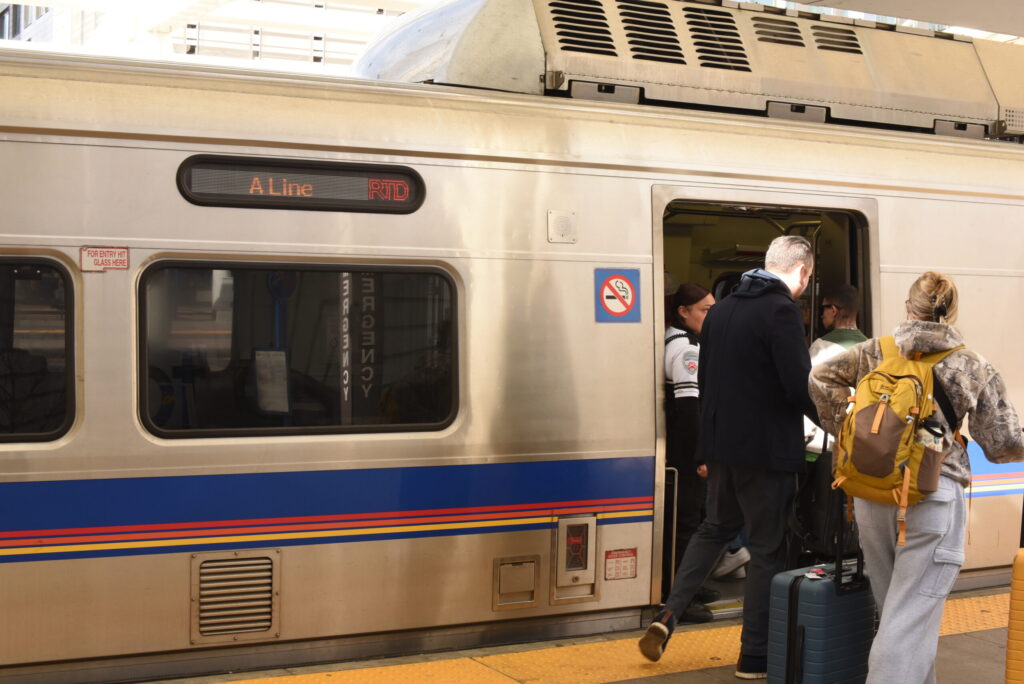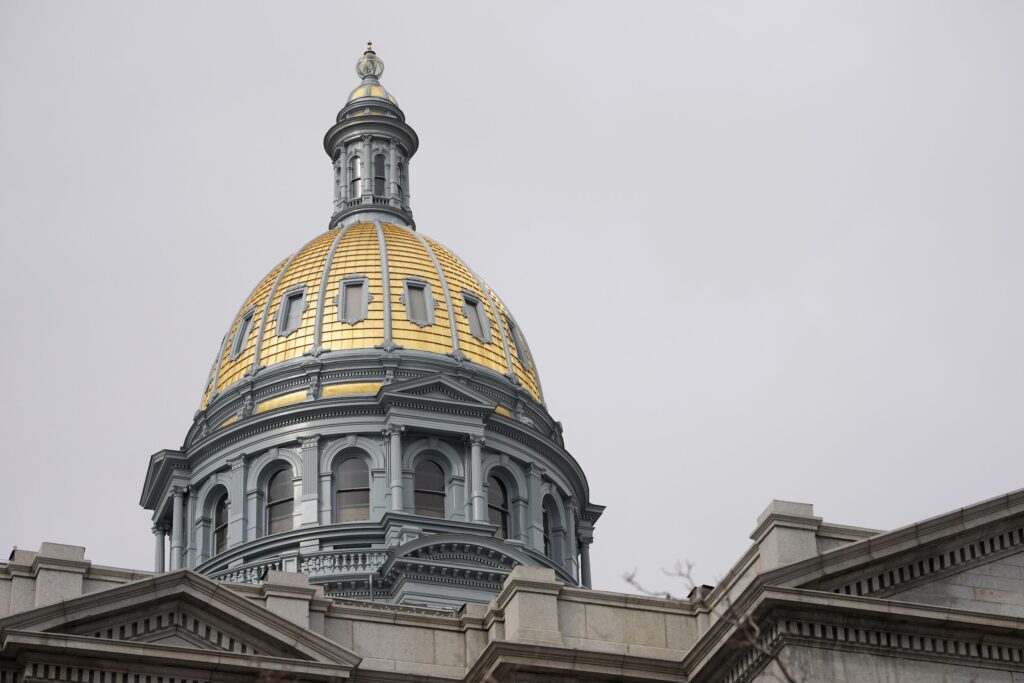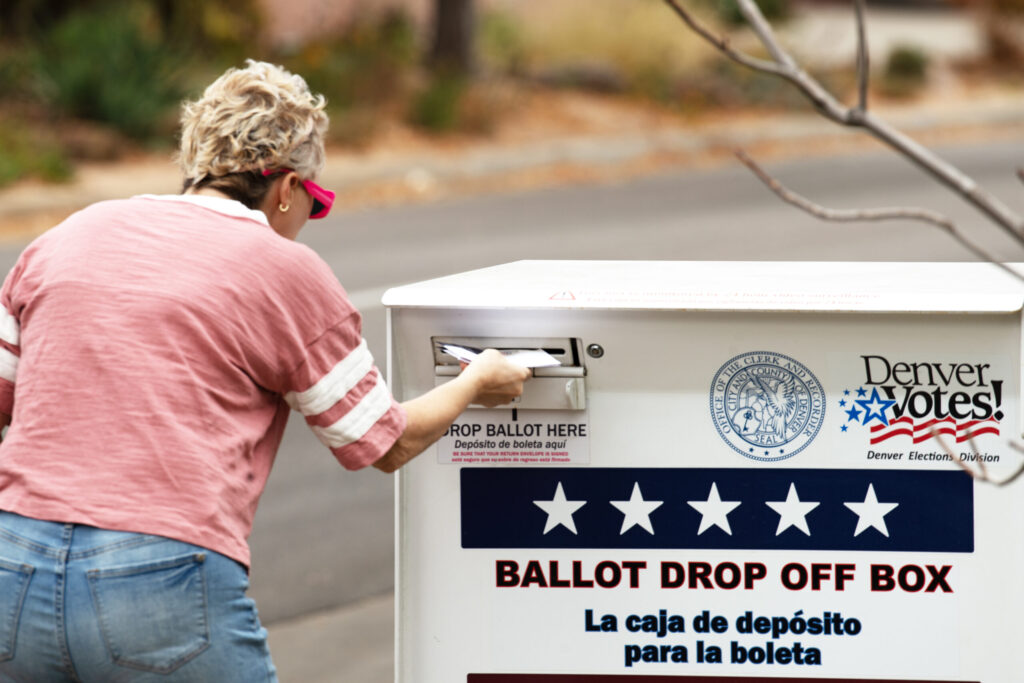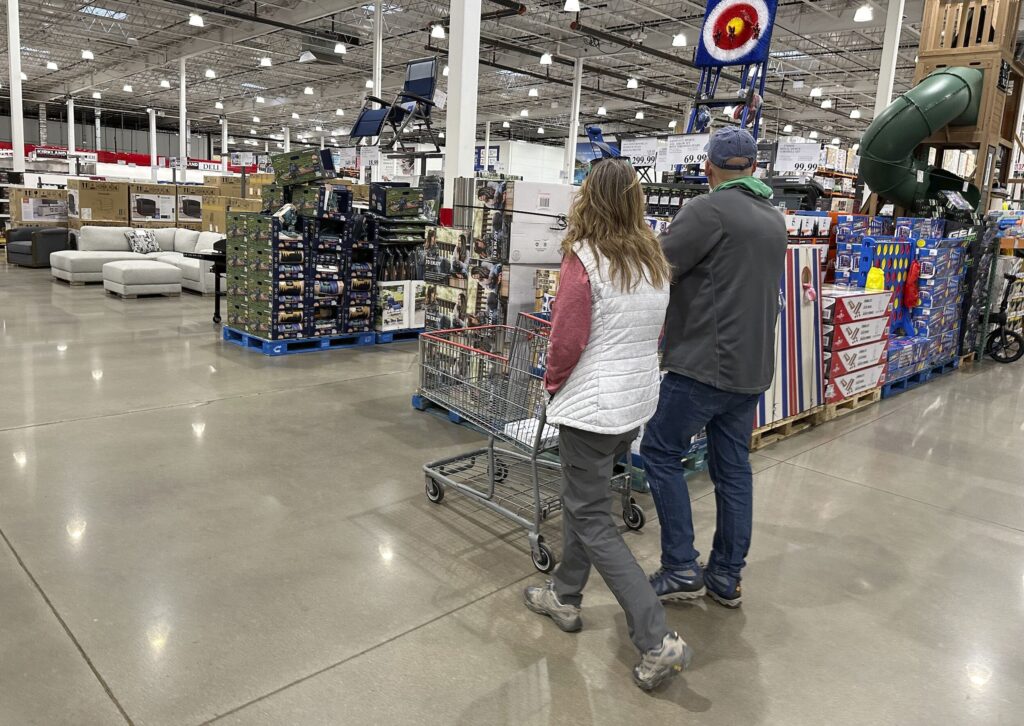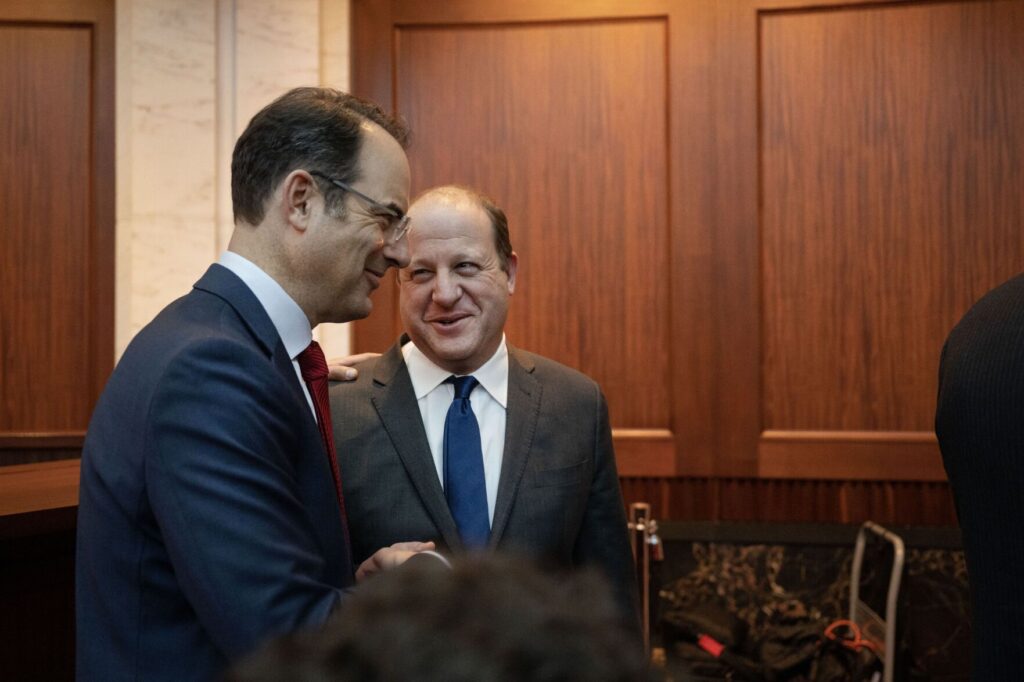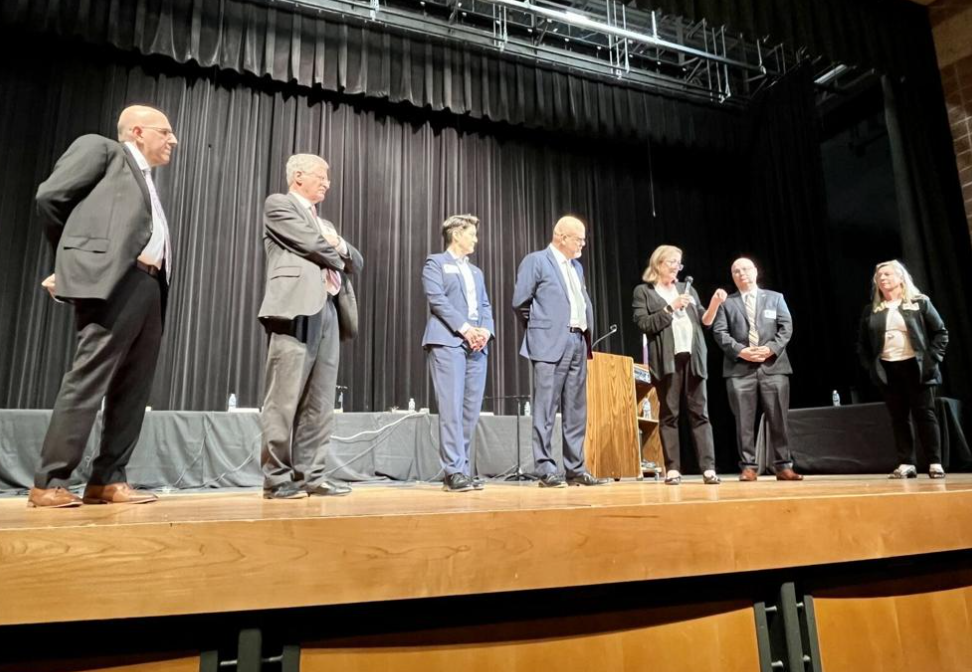10,000 deaths: Colorado’s grievous losses have devolved into an unwinnable argument

The week after Thanksgiving, Dr. Joseph Forrester stood by the bedside of a man who’d been in the intensive care unit at the Medical Center of Aurora for two months. The patient was in his 70s, and COVID-19 had so ravaged his body that a ventilator breathed for him.
Standing next to Forrester was the man’s wife, who’d come to see her husband frequently during his long inpatient stay. Some families argued with doctors and nurses, demanding debunked treatments or questioning the existence of the very virus that was actively, visibly killing their loved one. But this woman wasn’t combative. She was mostly just quiet.
As they stood there, Forrester asked her if she’d been vaccinated.
“No,” she said.
“Why?”
“I don’t know,” she told him, as the ventilator pumped air into her husband’s lungs. “It really hasn’t been tested; it’s still sort of experimental.”
Forrester later said the conversation felt surreal, held as it was by the bed of a man he’d watched waste away from a disease whose deadly outcome had been rendered largely preventable. The man’s wife had watched, too.
“Can a vaccine be worse than what your husband’s going through?” Forrester asked her.
The woman didn’t reply. She only looked at him, with an expression the doctor interpreted as disbelief, or possibly scorn.
Her husband would later die, yet another victim of a virus that has warped life in Colorado – and, as of last week, claimed more than 10,000 of its residents’ lives.
Underpinning that grim number are indisputable facts about how the deaths have mounted:
- Roughly 85% of COVID-19 deaths since May, shortly after vaccinations became widely available, have been among unvaccinated Coloradans.
- Counties with lower vaccination rates have multiple times the COVID-19 death rates than counties with higher vaccination rates.
For example, in Dolores, Kit Carson and Washington counties, where more than half of the residents are still unvaccinated, the number of per capita COVID-19 deaths between May and early December is seven times higher than in Denver and Boulder counties, where the unvaccinated portion of the population is closer to 10%, and around 20 times higher than Pitkin County, where almost every resident has had at least one dose of a COVID-19 vaccine.
The death toll has spiked and steadied with seasonal changes, but for the past 21 months it’s climbed. Ceaselessly. At times, when COVID-19 deaths have surged, weekly and monthly counts of coronavirus deaths put it ahead of all other causes of death in the state. For the past several weeks, COVID-19 deaths have outnumbered all other causes. Even so, Colorado has the 10th lowest per capita death rate to COVID in the nation, 17 per 100,000 people, according to Johns Hopkins data last week.
Almost two years into a war we entered, as a species, the battles we’re fighting on the home front are much more complex and nuanced, and – it seems – possibly even harder to win.
“At first, it was like, ‘We’re all in this together,'” said licensed clinical social worker Jackie Melin, of Peak Healing Center in Colorado Springs. “In any other time, when we have this common enemy we would fight it together as a community, as a people, as a country. It felt like we did that, for a long time … but, with politics and social media … that’s just no longer the case.”
Needless, ‘soul-crushing’ death
More than 800,000 Americans have died since COVID-19 claimed its first U.S. victim in early 2020. At times, before the availability of vaccines, and again after the surge of the Delta variant in late summer, the virus has outpaced cancer and heart disease as the leading cause of death.
In El Paso County, 739 people have died of COVID-19 this year, the highest number of losses in any county statewide and well over the 2020 death toll of 608. Many of these deaths – particularly the more than 400 people lost since August, months after vaccines became widely available – could have been prevented.
By comparison, in Denver, there have been 391 deaths among COVID-19 cases, 207 of which have come since August.
Studies have shown and statistics confirm that those who are vaccinated are 12 times less likely to be hospitalized and about 11 times less likely to die if they contract the virus.
Yet some still refuse to get vaccinated, even after seeing their family members die of the disease.
Last year, the El Paso County Coroner’s office examined 13 people who died of COVID-19. By the middle of November in 2021, that number stood at 54, and many of them were under 60.
Some who died had raging pneumonia. Others showed relatively few symptoms.
Almost all were unvaccinated.
“When you throw in the politics of the whole thing and the just completely unnecessary drama that is occurring, that is soul crushing to me and the staff here,” said El Paso County Coroner Dr. Leon Kelly.
Monument native and traveling nurse Emily Bryant has watched the pendulum’s swing from the inside. She was working in a busy Rhode Island emergency room when the pandemic hit and personal protective equipment shortages crippled hospital systems nationwide. She’s now on staff at a hospital in Bend, Ore., witnessing a pandemic whose effects, after a lull during the spring and early summer, continue to play out in more quiet, but no less powerful, ways.
“One of the people here the other day said, ‘I just wish people would realize that when we say our COVID numbers are going down so drastically, what they don’t know is that I made five trips to the morgue yesterday,'” Bryant said. “There’s not the battle zone that there was, but it doesn’t mean people aren’t getting sick and dying from it.”
Because of the surge in COVID-related intakes, UCHealth has postponed all elective surgeries. The policy echoes one in place last year, when the virus was at its worst.
‘No end in sight’
The U.S. has already lost more lives to COVID-19 than were killed in combat during the Civil War and World War II combined. But unlike in the early days of the pandemic, experts and providers say there’s a numbness that surrounds the numbers now, a paradoxical detachment even as the death tolls grow grimmer.
“That’s my concern … that we’ve had so many stark numbers … the numbers seem to be almost an anesthetic for people, rather than a call to responsibility,” Forrester, the Aurora doctor, said. “I’m just really frustrated and disappointed. But I do think, as with most things, eventually, we’re going to get it right. It’s just, how many lives are we going to have to sacrifice unnecessarily to eventually get there?”
Healthcare workers say a distrust of vaccines is one factor contributing to burnout among those who care for patients whose bodies are fighting to survive the disease, as well as those who take over should they lose the battle.
Part of it is simple professional exhaustion, physical, psychological, and intellectual.
“I think the biggest thing I have heard, resoundingly, is that there has been no break … no end in sight,” said Jackie Melin, who treats a number of healthcare workers at her Springs’ counseling center. “What I think that’s so frustrating for the people who work in the hospital is this is their reality every day, yet none of us really hear about it unless you talk to people who are there.”
Bryant is one of those people, and shared her thoughts in an essay published on nurse.org.
“I wrote a whole article … about how the joy in nursing had gone away,” said Bryant, recalling a time earlier this year when there was a pervasive feeling of anger and certainly frustration among her colleagues, towards patients who’d chosen to forgo the vaccine.
“That was just sad to watch, just so many people so grumpy at work. Grumpy and mad,” Bryant said.
Things have gotten better, she said. Perhaps, healthcare workers have learned to pick their battles.
“At this point, it’s like, if you wanted to be vaccinated you would have been,” Bryant said. “It’s not like it was before, the emotional sad triggers of seeing all of these people sick and dying. I’m not saying it’s not sad that people are still getting sick, but it’s not people who had no choice. People now have a choice, to protect themselves or not.”
A country ‘defeated in war’
And choice is where things get complicated.
UCHealth requires masks and a mandatory virus screening for visitors, “even if you’re vaccinated.” At the Bend hospital where Bryant works, though, if you haven’t received the vaccine you can’t enter unless you’re a patient.
“When you ask (about their vaccine status) they can become super defensive and rude, on so many levels,” Bryant said. “I think so many of us at this point… we don’t try anymore to change anyone’s perspective because if it hasn’t changed at any point, it’s probably not going to … but I get how this (policy) feels much more targeted. It’s not like before, a blanket, ‘No one can have visitors.’ Now, it’s, ‘You aren’t allowed in because of a choice you made.'”
When Grand Junction artist Linda McBride led an effort to memorialize the more than 300,000 people lost to COVID-19 a year ago as sparkling silver dots on rose petal panels, the fight against our common enemy – and the processing of grief it conjured up and left behind – was more linear. The nation had yet to be divided over vaccines.
“COVID has become so layered and so the grief has become a little more complex in terms of it being mixed with the political ramifications that are going on, all the controversy,” she said.
Community members who helped paint the silver dots that stretched across 64 panels meditated or said a blessing over each one. Some painted for an hour. Others just wanted to paint a single dot for their loved one, McBride said.
The grief was personal for McBride, who lost her aunt during the pandemic. But it’s bigger than that, too.
“We have to face death. We have to face our limitations in a way that maybe countries that are defeated in war have to,” McBride said.
But the healing process must first begin with acknowledging that we still are at war – with a virus, and with denial.
In his 40 years as a physician treating patients, Forrester worked in Detroit and at a remote Air Force medical clinic in the Mojave Desert, where fighter pilots aspired to be astronauts. He’s cared for patients whose livers have been devastated by alcohol and whose bodies have been broken in reckless car crashes, and watched as a young man died of preventable cancer because his family refused treatment on religious grounds.
Even so, there is no analog for what he and other providers have seen over the past few months, in the ICU at the Medical Center of Aurora. The center, which Forrester helped establish, has seen more COVID-19 patients than any other hospital in HealthONE’s sprawling system.
For him, the first nine months of the pandemic, when Americans still faced a virus on roughly equal footing and shared unknowns, feel like a lifetime ago.
Frustration and exhaustion have replaced solidarity. No one howls for health care workers filling the streets with sounds of solidarity at 8 p.m. anymore. Some argue in hospital halls instead.
“(Providers) are working hard, trying to save people, and most of the people we see are unvaccinated,” he said last week, from his office in the medical center. “And so we admit them – the vast majority stay in the intensive care unit. ‘I thought I was healthy, I didn’t think I’d ever get sick. Or I just didn’t get around to (the vaccine) because I didn’t know anybody who got sick.’
“Then they die from the disease.”








